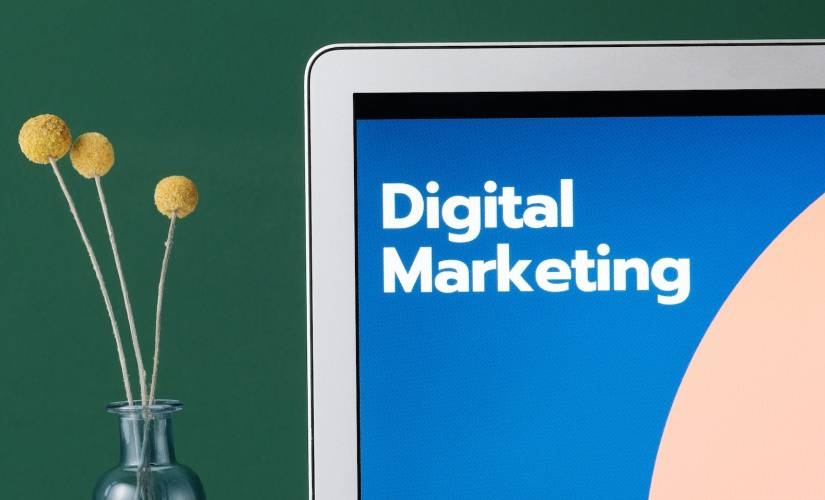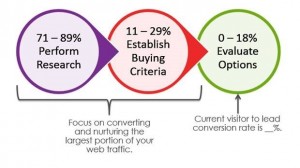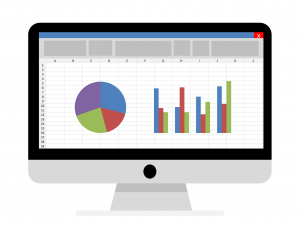Allocating Your Digital Marketing Budget: 7 Things To Consider

In the fast-paced world of digital media, companies, and startups are rushing to get their brands noticed by consumers on a global scale.
Effective communication has become easier and increasingly convenient in recent years, as the widespread adoption of technology and the internet now allow businesses to connect directly with potential customers, and build a loyal fan base throughout the process.
On the one side, we see how businesses of nearly every size these days have an allocated digital marketing budget and strategy. Although this is a crucial aspect for them to ensure they can remain competitive against their direct competition, it also increases the level of expertise required to get the best-desired results.
Having a digital marketing strategy can seem worthless if there is no financial capital that can help drive results and build expertise as the business grows. Marketplace experts suggest that B2C businesses tend to devote roughly 13.6% of revenue to their marketing budget, while B2B organizations dedicate only 6.7% of revenue to their marketing budgets.
The percentage assigned to a marketing budget and strategy will largely depend on the type of business, and the sector in which it operates. Additionally, those in charge of marketing will also have an impact on how much of annual revenue should be devoted to driving a meaningful marketing strategy and managing the funds assigned to every project.
As a small business owner, setting up your digital marketing budget can seem daunting. But if you are able to get the tedious planning and structuring under control, you’ll easily know exactly how much resources and financial capital is needed to set up the right marketing budget for your business.
Let’s take a look at the seven things you should consider when allocating your digital marketing budget.
Understand The Sales Funnel
The sales funnel, often referred to as the sales cycle, is the process through which a prospective customer goes through before making a final purchase or sale. Every business will have a different sales funnel, and it often will look different for every customer as well.
While it’s not possible to set up an individual marketing strategy or budget for every type of customer, it’s better to understand the sales cycle through which a customer will go before ending up becoming a paying client. Throughout the cycle, it’s important to include digital marketing tools and resources such as free materials, videos, blogs, and other media as part of the retention process.
Having Marketing Goals
Having a strong digital marketing team and a budget that can help catapult your business into the next frontier, it might seem useless and redundant to have all of this without having clear marketing goals.
Marketing goals can look different for every business, but right from the start before allocating any finances, consider what you want to achieve, and what type of financial resources will be required to achieve this.
Each quarter, as part of the marketing strategy, works on defining your marketing goals alongside your team members as this will give you a clear picture of where you are heading and what your business needs to succeed.
Assess Previous Strategies
While you’re building your new budget, take some time to backtrack to previous marketing efforts to see how you can improve going forward.
Assessing your previous strategies will bring to light several questions such as:
- What worked, and how much financial capital was available at the time?
- How did I resolve previous problems, and was there any need for an increase in spending?
- Which channels were more successful than others?
- How much did I spend on digital ads and did it give me the return I was aiming for?
If you notice that certain tactics managed to work for you in the past, there’s a slight chance they will work for you again. Just make sure to take some time to test out these strategies before fully committing to them.
Factor In Content Marketing Costs
Content marketing is one of the most successful ways to retain customers while at the same time keeping them engaged. Statistics suggest that companies spend on average 46% of their marketing budgets on creating engaging content.
Although publishing content online is free, the cost of paying freelancers and creatives to generate new content regularly is what quickly starts to eat into marketing budgets.
While it is possible to hire an in-house creative to complete these tasks, business owners and entrepreneurs will need to factor in the difference between hiring a full-time employee, or paying a freelancer. On top of this, it should also be important to consider how much freelancers charge for specific jobs, and what their timeline is until delivery.
Consider Different Options
With a variety of communication channels available, businesses are often left with the difficult task of choosing a digital product that can be used to advertise their businesses effectively.
Not every platform or digital tool out there will work the same, and depending on the type of product or service you’re looking to advertise, it’s not to say that each platform will function in the same way every time. You’ll also need to consider the target audience, whether they use these sorts of platforms and how they interact with the content that is made available to them.
Allocate According To A Formula
Once you have a marketing strategy in place, you can start to work with the 70-20-10 rule when allocating money to your strategies.
The breakdown looks as follows:
- 70% – should be allocated to marketing strategies that work for your business and the marketing goals.
- 20% – should be spent on creating new strategies and developing new marketing tactics that can help your business grow.
- 10% – is for experimental digital marketing, which is used to test out new strategies for the future.
Experts suggest that you give more priority to digital marketing strategies that were successful in the past, as this will help give you a clear indication of how much money to allocate to these types of strategies. It’s quite obvious that you should allocate less money to those strategies that were less successful, or failed and gave you minimal returns in the past.
Additional Expenses
With the majority of the budget now being allocated to an overarching marketing goal, it’s time to start factoring in additional marketing expenses such as website management, paid search, paid social media ads, Google Ads, paid keywords, graphic design costs, content creation costs, and video creation.
Among these, it’s important to consider how much you will be spending on each as a way to understand what the final costs will tally up to. For the best possible results, research experts in your area to see how much they will charge for individual cases and projects, which can then be used as an average figure in the final marketing budget.
Final Thoughts
Setting up a marketing budget, albeit a small budget for startups and small businesses can seem like a daunting task, especially if you’re uncertain how much financial capital is needed to boost marketing efforts.
In short, it’s important to consider your marketing budget against the overall marketing goals, looking at what you want to achieve, and how your marketing strategies will drive more traffic and overall sales.
Once you have a clear idea of where you’re looking to go with your marketing strategy you will soon start to find it a lot easier to allocate the right amount of money for each segment of the budget. Be open to making changes where needed, and in the first half remember to overcompensate a bit, as this will help you plan and save better in the future.
Published First on ValueWalk. Read Here.
Featured Image Credit: Photo by Mikael Blomkvist; Pexels; Thank you!
The post Allocating Your Digital Marketing Budget: 7 Things To Consider appeared first on ReadWrite.
(18)









